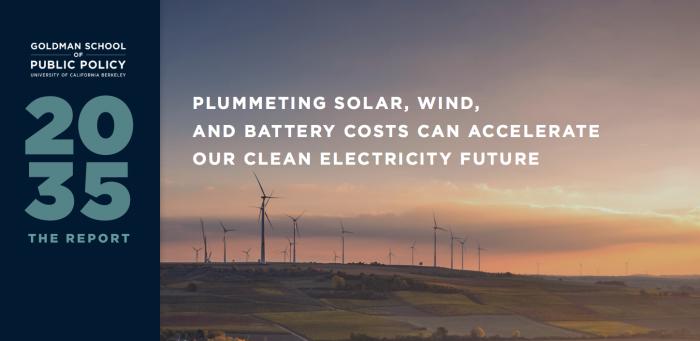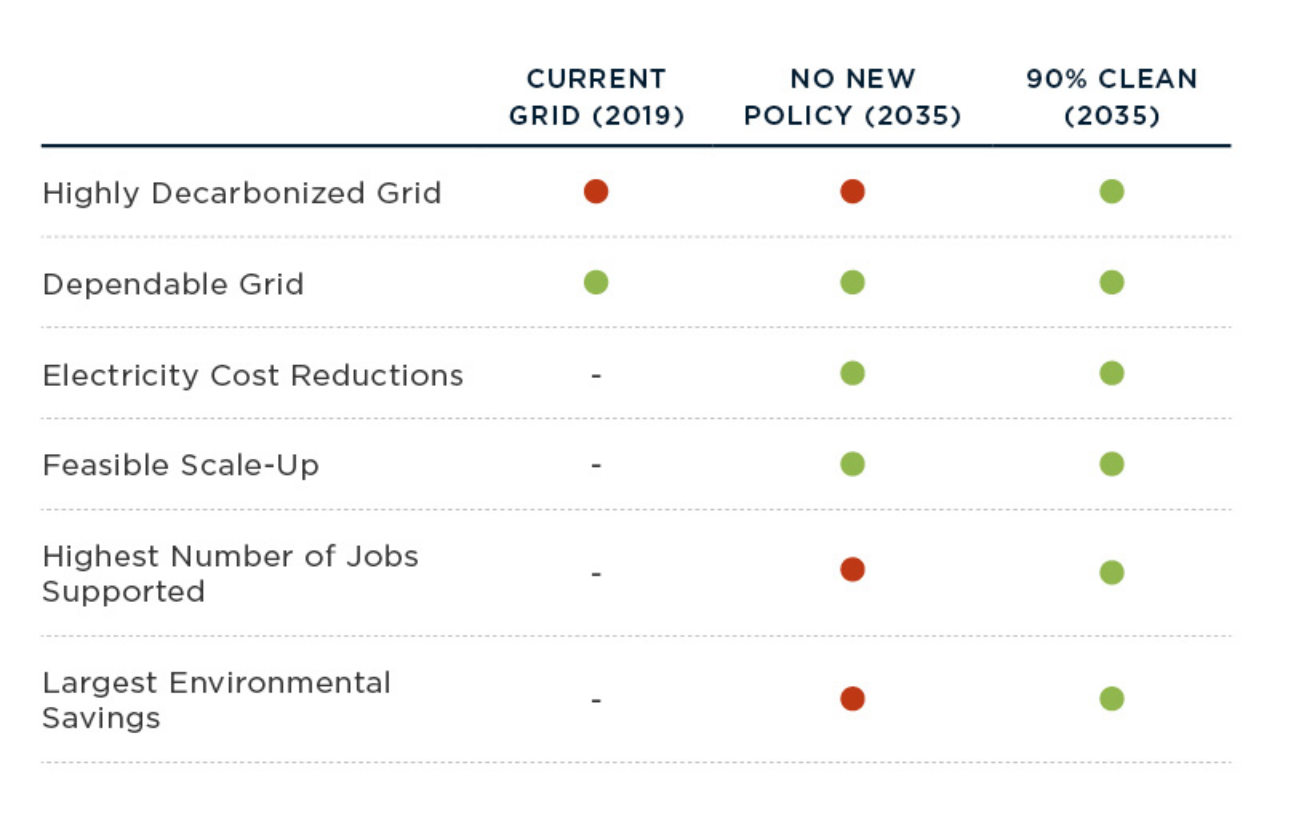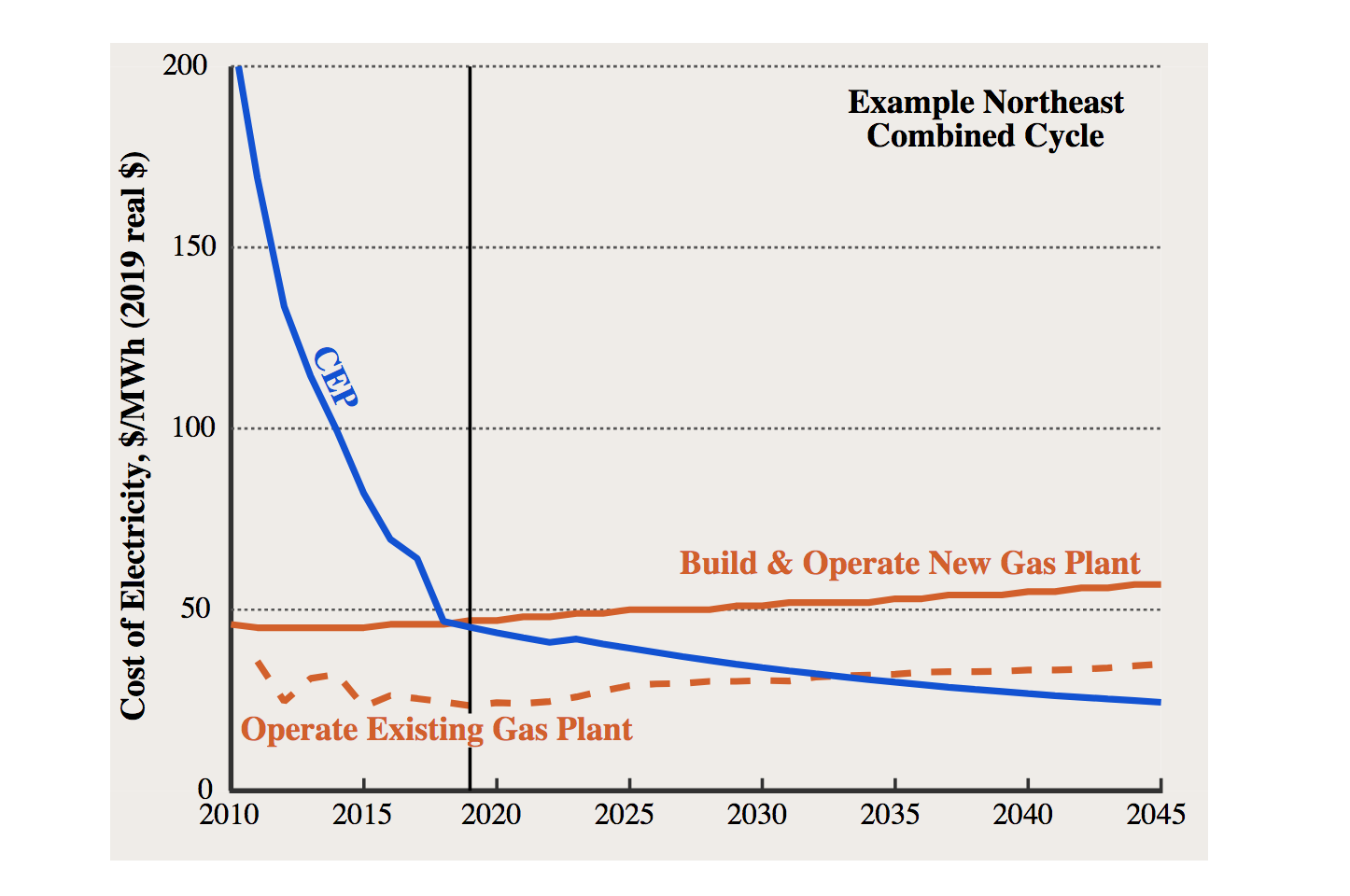The 2035 Report – A Blueprint for How the US (and others) Can Transition to a Clean Energy Economy, Starting NOW


2050 has long been the year cited by which carbon emissions must be reduced by zero, which was already a step more aggressive than the stretch Paris Agreement goal of limited global temperature rise to 1.5 degrees Celsius by 2050. Now, the authors of the 2035 report and others are increasingly arguing that the new goal for net zero must be 2035 (or even 2030) to prevent the worst effects of climate change from taking place. Why the shift? Climate effects seem to be arriving faster than predicted, due at least in part to feedback effects. Unfortunately, current “aspirational” projections by Paris Agreement signatories point to a global rise of 3 degrees Celsius – unless something changes.
Published by the UC Berkeley Goldman School of Public Policy, the 2035 Report lays the foundation for exciting sustainable changes in the energy industry, if we in the US can make some bold and exciting decisions regarding our energy future. The plan contains valuable information and can certainly be adapted for global use, and it also shows that the US is still poised to play a leadership role in a global clean energy future, especially if national policy priorities shift.
The 2035 report is full of great news, but also some warnings. The super news is that we already have the technology to reach 90% clean electricity by 2035 without building new natural gas plants, and with reducing generation from current plants by 70%. The less good news is that it’s not clear we will choose this path with so many obvious benefits, as policies can be slow and difficult to change, and sometimes vision can just be more shortsighted. The analysis has been done to show win-win-win scenarios for decarbonizing – we’re literally charging future generations financially and in terms of health impact if we do not work to implement as many of this report’s recommendations as possible.
Natural gas may burn cleaner than coal and oil at the point of combustion, but it’s become increasingly clear that surprisingly high methane leaks in the production and distribution processes erase potential benefits, and lead to negative climate and other environmental impacts. Methane and other chemicals in gas also cause significant health impacts in buildings, particularly when ventilation is insufficient. In addition, natural gas is still a fossil fuel, and all fossil fuel use must be drastically reduced to achieve zero carbon emissions by mid century, if not sooner.
A positive development is that wind and solar are now often cheaper to deliver (and in a large percentage of the world) than building new fossil fuel plants, even gas. Renewable energy will become even more competitive as battery storage capacity continues to grow. Ultimately, and combined with other factors, the continued renewable energy price decreases mean that we can we can decarbonize while also saving money. This is a win everyone should be able to think through and agree on.
Emissions reductions and health and environmental benefits should form a pretty conclusive argument, but there are additional benefits to aggressive decarbonization. Specifically, and in brief:
- An increase of over 500,000 energy sector jobs annually though 2035
- A REDUCTION of wholesale energy costs of 10% by 2035
- $1.7 trillion of private investment for renewable energy and energy storage
- Prevention of $1.2 trillion in cumulative environmental and health damages, including approximately 85,000 premature deaths through 2050
- An economy-wide greenhouse gas reduction of 27% by 2035
 Source: https://www.2035report.com/
Source: https://www.2035report.com/
The benefits listed could be even greater, as the 2035 report team labels their own estimates as conservative. Continued energy storage advancements, demand-side approaches such as demand response and flexible loads, and efficiency breakthroughs among other developments, could increase benefit levels. Additionally, the 2035 report provides calculations that include environmental costs. Factoring in environmental harm, wholesale electricity savings by 2035 are estimated at an impressive 33% reduction.
Relying on already-built natural gas plants to provide the last 10% of generation avoids new investments for infrequently used capacity while avoiding major stranded-asset costs and cutting emissions.
A key challenge, according to the Rocky Mountain Institute (RMI), is that there are currently plans to build over $70 billion in new gas plants through 2025 and another $30 billion in interstate gas pipelines. In contrast, the 90% clean energy plan calls for no new additional gas capacity. In the future, natural gas would provide approximately 10% of energy needs, coming online flexibly to stabilize the loads powered by renewable energy sources. While these planned gas plants might have once been or theoretically could seem appealing based on current or past economics past economics, they clearly do not make good investments long-term as their 50+ year operating lives will likely cause them to become what are known as “stranded assets,” either remaining open when it would not make both environmental and economic sense, just as they’re “already there and functioning,” or literally costing preventable expenses to close early. Additionally, the growing number of climate and emissions targets, and the expected continuing reductions in renewable energy prices will only make the gaps shown larger in terms of the plan/policy mismatches and costs. There is no win for stranded assets: operating past their sustainably justifiable life will unreasonably compete with or delay competitive renewable energy technologies (at higher costs), and closing early can leave significant debt remaining to be paid by future consumers, made potentially worse by additional costs to decommission the assets.
Another challenge is that solar and wind growth plans are aggressive. Approximately 1100 GG of new solar and wind must be built, at about 70 GW per year and totaling about the size of current annual power generation. This effort amounts to a doubling of traditional growth in the 2020s and then a tripling in the 2030s, while storage deployment would need to grow by about 25% per year. The good news is that this plan is challenging but achievable – with concerted effort and the right mix of policy change and incentives.
 Source: Ultility Dive: The Truth About Natural Gas: We Don't Need to Build Any More
Source: Ultility Dive: The Truth About Natural Gas: We Don't Need to Build Any More
There’s general agreement in the scientific community that we are unfortunately currently “not on track” to decarbonize optimally, and change will not occur without fairly significant policy changes. Progress is being made at the local and state level, particularly in response to subnational emissions targets and Paris Agreement commitments, but the federal government will need to ramp up legislation and take action as well. According to Energy Innovation Policy & Technology LLC, the following “no-regrets” actions can help the US achieve 90 clean energy (or up to 100% clean energy) while REDUCING wholesale electricity rates 10%:
- A federal clean electricity standard which targets 55% clean energy by 2025, 75% by 2030, 90% by 2035 and 100% by 2045. States with progressive policies can lead the way and complement this policy.
- Extend federal investments in clean energy technology
- Extend/add incentives and tax credits for clean energy technology, and include battery storage
- Provide support for coal-dependent communities, including: pension support, healthcare benefits, and employment transition support/assistance, including training programs.
- Enable refinancing of retired coal equity and debt to lessen the burden of switching to communities and utilities
- Enable/streamline renewable energy and transmission siting
- Reduce transmission and interconnection costs
- Reform wholesale power markets to reward flexibility and to be compatible with federal and state clean energy targets
- Reform utility business models to reward cleaner and more efficient energy production and transmission
How important are these policy changes? Without them, the “no new policy case” shows electricity rates 12% higher in 2035, and approximately 55% clean energy – not enough to meet key climate goals.
What can this future look like? Imagine no coal plants, no new natural gas plants along with a decrease of gas consumption of 70% (and gas health and environmental effects minimized), and wind and solar producing 70% of annual energy generation on a clean energy grid system that meets all demand dependably, even during peak high and low demand periods. How do we reach this future? We must aggressively invest in and incentivize renewable energy growth, including battery storage capacity, and we must reign in any fossil fuel growth – and not build any new natural gas infrastructure. The 2035 Report shows that we have the tools. Are we smart enough as a community and as a body politic to make what are clearly the right choices going forward? Also, how soon can we get started?
To learn more:
2035 Report One-Pager
The Full 2035 Report
The Truth About Natural Gas – We Don’t Need to Build Anymore
Rewiring the US for Economic Recovery – a 90% Clean by 2035 Policy Memo
Rocky Mountain Institute: Insight: Clean Energy Portfolios; Pipelines and Plants
- Filed Under: Advocacy
- Keywords : clean energy, Solar, Renewable Energy, Wind, Carbon, Zero Emissions
- ( 11212 ) views

The Rate It Green Team - This is an account for Allison and plenty of kind helpers, for sharing information when/where it really doesn't particularly matter which of us actually posted. Questions? Send us a note through our contact form, or email info@rateitgreen.com.
- ( 0 ) Ratings
- ( 105 ) Discussions
- ( 6 ) Group Posts
Reply/Leave a Comment (You must be logged in to leave a comment)
Connect with us!
Subscribe to our monthly newsletter:
 Greenbuild Report Out, 2025 Nov 12, 2025
Greenbuild Report Out, 2025 Nov 12, 2025





Related Posts
-

-

-

-
 Making Green Sustainable... Again Apr 20, 2020
Making Green Sustainable... Again Apr 20, 2020 -
 Are you a sustainability rockstar? Sep 09, 2018
Are you a sustainability rockstar? Sep 09, 2018




















Not a Member Yet? Register and Join the Community | Log in